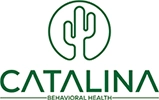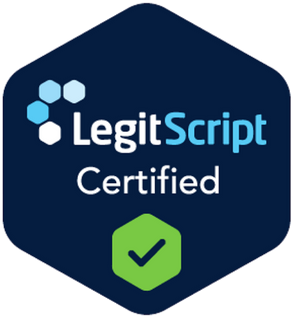Coming to terms with addiction and making the decision to seek treatment is a very big step. It’s not always easy to know what level of care you need or where to start. That’s why it’s important to understand the levels of care in addiction treatment and what each entails.
At Catalina Behavioral Health, we create personalized treatment plans that address each client’s unique needs. With each personalized plan, we make sure to place our clients in the level of care that will best help them recover. We understand that addiction is a disease that requires specialized treatment, and we are here to help you every step of the way. We apply the continuum of care to make sure that anyone dealing with substance use disorder gets the help they need.
If you or someone you know is struggling with substance use disorder, please reach out to Catalina. We can help you get on the road to recovery!
Get Licensed Addiction Treatment – Reach Out Now!
Why Are the Different Levels of Care Important?
Addiction is not the same for everyone. There are different levels of severity, which is why there are different levels of care in addiction treatment. The levels of care range from outpatient to inpatient, and each level has its own set of benefits. Because of this, treatment centers may follow a different treatment process during substance abuse treatment.
Addiction or substance use disorder is a complex disease that requires specialized treatment. At Catalina Behavioral Health, we offer a variety of levels of care to meet the needs of our clients. From outpatient services to inpatient care, we have a program that will fit your unique needs. We understand just how important it is to get the right level of care, which is why we offer a free assessment of your use to help determine which level of care is right for you.
The different levels of care are important because they allow each person to get the individualized treatment that they need. Depending on the severity of the addiction, different levels of care will be more or less beneficial.
Examples of the Levels of Care in Addiction Treatment

In one possible instance, someone with a mild addiction may do well in an outpatient program. However, someone with a severe addiction will likely need to go through intensive inpatient care in order to get the most benefit from treatment. The recovery process should always be as meticulous as possible, from outpatient services to intensive outpatient programs, inpatient treatment, and partial hospitalization programs.
It’s important to remember that the length of time in treatment will also vary from person to person. Some people may only need to go through a short-term program, while others may need to stay in treatment for a year or more. It depends on how long a person has been dependent on drugs or alcohol, how severe their addiction is, and other factors.
The most important thing is to get help if you’re struggling with addiction. There are many resources available, and treatment can make a huge difference in your life. If you’re not sure what level of care you need, speak to professionals from Catalina Behavioral Health so that we can help you figure it out. With the right level of care, addiction treatment can be very successful.
What Is the Continuum of Care and How Does It Work?
A continuum of care pertains to the levels of intensity and support that a person needs to recover from addiction. It starts with the least intensive level, outpatient care, and moves up to inpatient treatment, which is the most intense. In between these two levels are partial hospitalization (PHP) and intensive outpatient programs (IOP).
The beauty of a continuum of care is that it’s flexible. If a person starts outpatient treatment and their addiction is more severe than they thought, they can move to a higher level of care. Or, if someone completes inpatient treatment and needs extra support to prevent relapse, they can step down to a lower level of care.
A continuum of care means that there’s a treatment option for every person, no matter their level of addiction or circumstances. Plus, it provides a way to adjust treatment as needed, so that people always have the level of support they need to recover.
A Better Foundation for Addiction Recovery
The American Society of Addiction Medicine’s (ASAM) continuum of care aims to ensure that each client receives the best possible care for their unique situation. That’s why levels of care are important in addiction treatment. At Catalina Behavioral Health, we follow ASAM’s care levels to ensure that our clients get the treatment they need. Following the five levels of treatment for continuum care, we can guarantee that our clients will get the best possible care.
Aside from benefiting clients, the continuum of care can also benefit insurance providers. By ensuring that clients get the level of care they need, providers can avoid overspending on unnecessary levels of care. For example, if a client only needs outpatient treatment, placing them in an inpatient program is unnecessary. This helps insurance providers determine the appropriate coverage levels for each client.
The process of how the continuum of care works in different levels of addiction treatment is as follows:
- A person with substance use disorder first meets with a counselor to discuss their symptoms and level of usage.
- The counselor then recommends a level of care based on the severity of the usage.
- If the person agrees to treatment, they start at the recommended level of care.
- As the person progresses in treatment, they may move to a higher or lower level of care based on their needs.
- When the person completes treatment, they may move to a less intensive level of care, such as alumni support groups or sober living homes.
How Does Catalina Behavioral Health Determine the Levels of Care?

The healthcare providers at Catalina Behavioral Health determine the levels of care that will be most beneficial for each client on an individualized basis. A variety of factors will be considered, including but not limited to:
The Severity of the Addiction
Considering the severity of the addiction is one of the most important factors in determining the levels of care. Clients who have a more severe addiction will require a higher level of care, such as inpatient treatment, while those with less severe addiction may only need outpatient treatment.
The Length of Time the Addiction Has Been Going On
Another important factor to consider is how long the addiction has been going on. Clients who have been struggling with addiction for longer may need a higher level of care, as they may be more likely to experience relapse.
The Client’s Overall Health
Another factor that will be considered is the client’s overall health. Clients who are in poor physical health may need a higher level of care, as they may be at risk for complications from withdrawal or other aspects of treatment.
The Client’s Mental Health
Mental health is another important factor that will be considered when determining the levels of care. Clients who suffer from mental health disorders such as depression or anxiety may need a higher level of care, as they may be at risk for self-harm or suicide.
The Client’s Social Situation
Finally, the client’s social situation will be considered. Clients who do not have a support system in place may need a higher level of care, as they may be at risk for relapse or other problems.
All of these factors will be considered in order to determine the levels of care that will be most beneficial for each client. By considering all of these factors, the healthcare providers at Catalina Behavioral Health will be able to create a treatment plan tailored to each client’s needs.
24 Hour Addiction Treatment – Get Help Now
The ASAM Criteria for Addiction Treatment
The ASAM criteria serve as the guide that healthcare providers use to determine the levels of care. The ASAM criteria is a tool that revolves around the following principles:
Considering the Entire Person
The levels of care must take into account the whole person, not just their addiction. This includes looking at physical, psychological, social, and spiritual needs. By doing this, we can get a more holistic view of the individual and create a treatment plan that will address all of their needs.
Personalized Treatment Times
The levels of care must also be based on the individual’s unique needs. This means that treatment times will vary from person to person. Some people may need longer in treatment than others, and that’s okay. The most important thing is that the individual gets the care they need for as long as they need it.
Personalized Treatments for Different Clients
Since addiction is different for everyone, levels of care must also be personalized. This means that each individual will go through different levels of care based on their unique needs. It is important to tailor the level of care to the severity of addiction and any other underlying mental health issues. Benchmarks based on the ASAM levels of care will be used to help determine what level of care is appropriate for each individual.
Making Numerous Services Available for Clients

Numerous programs and services must be readily offered to clients in order for levels of care to be effective. Services should be able to meet the needs of clients as they move through each level of care. There are different types of services that can be offered, which include:
- Individual therapy
- Group therapy
- Family therapy
- Case management
- Psychiatric services
- Medical services
Each client must be able to access the services that they need in order to progress through each level of care. Not every client will require the same type or amount of services, which is why it is important to have a variety of services available.
Preparing Clients for Success in Recovery
Even though addiction can be very challenging to deal with, it is still important to be optimistic and think about the possibility of success. Getting caught up in the negative aspects of addiction can be easy, but it is important to remember that levels of care in addiction treatment exist for a reason. By educating clients on addiction through proper levels of care, increasing the chances of success becomes more possible.
Changing the Definition of Addiction
In the past, addiction was often perceived as a moral failing. People with addiction were seen as weak-willed and lacking in self-control. This perception led to a great deal of shame and stigma surrounding addiction and those who suffer from it.
Thankfully, our understanding of addiction has changed dramatically in recent years, thanks to ASAM’s guidelines. We now know addiction is a chronic, relapsing brain disease requiring professional treatment.
Just as importantly, we now know that there are different levels of care that can be tailored to each individual’s needs. These levels of care range from outpatient treatment to inpatient rehab and everything in between.
Because of this definition of addiction, we now know that it is possible to completely recover from addiction and live a happy, healthy life. If you or someone you love is struggling with addiction, don’t hesitate to reach out for help. There are many levels of care available, and we can help you find the one that’s right for you.
The American Society of Addiction Medicine’s Levels of Care
ASAM has released standardized levels of care in addiction treatment to ensure that clients receive the levels and intensity of care they need when they need it. The levels are as follows:
Level 0.5 – Early Intervention Service
This level is for people at risk of developing a substance use disorder or in the early stages of addiction. Early intervention services can help prevent the progression of addiction and reduce the likelihood of developing a more serious problem.
At this level, identifying the risk factors and warning signs of addiction is crucial. These risk factors include the following:
- History of abuse or trauma
- Poor parental support
- Lack of closer relationships
- Mental health disorders
- Peer pressure
- Substance abuse in the family
- Unstable home life
- Exposure to drugs or alcohol at an early age
This level’s goal is to prevent further drug use by providing the individual with education, support, and counseling. The focus is on helping the person develop healthy coping skills and behaviors to deal with stressors in their life.
Level 1 – Outpatient Treatment

Outpatient treatment is needed when the client does not need 24-hour care and can be treated during the day. It is the least intensive level of care in addiction treatment. Level one care typically requires weekly visits to a therapist or counselor and may also include group therapy sessions. Clients in outpatient treatment live at home and typically continue to work or go to school while receiving treatment. This means that their addiction does not interfere with their responsibilities and social lives.
Level 2 – Intensive Outpatient Treatment and Partial Hospitalization
This level is for those who need more structure than what level one offers, but don’t require 24-hour care. Treatment at this level typically requires three to five hours of therapy per day, either in an outpatient or partial hospitalization setting. This level is best for those who have completed levels one and two of treatment and are looking for a less intensive level of care.
Partial hospitalization treatment (PHP) is a level of care that offers more structure and support than IOP but doesn’t require 24-hour supervision. PHP typically requires five to seven hours of therapy per day, five days per week. The goal of partial hospitalization is to help you transition back into your everyday life while still receiving treatment for your addiction. PHP is the most intense out of all the outpatient program levels available to clients.
Level 3 – Inpatient Services
This level is a very intensive level of care in addiction treatment. Clients live at the treatment facility and receive 24-hour care and supervision. This level of care is typically recommended for patients who have unsuccessfully tried less intensive levels of care, such as outpatient or partial hospitalization. Inpatient services provide a safe and structured environment for patients to focus on their recovery.
At this level, clients can no longer attend work or school and must have a stable living situation upon discharge. This level of care is typically the most expensive but also the most effective in addiction treatment. In inpatient or residential treatment centers, recovery skills are taught so that clients can deal with their alcohol addiction or drug addiction problems in the best way possible.
Teaching recovery skills falls on the treatment providers or licensed medical professionals, who aim to avoid developing mental health conditions that might exacerbate the substance use disorder.
Level 4 – Medically Managed Intensive Inpatient Services

The highest level of care under ASAM’s levels of care is medically managed intensive inpatient services. This level of care is appropriate for clients requiring 24-hour monitoring and care due to their addiction and/or medical condition severity. Clients in this level of care will have around-the-clock access to medical staff and will usually stay in the hospital for a period of time. After being discharged from the hospital, clients typically transition to a lower level of care, such as residential or intensive outpatient treatment.
At this level, withdrawal management is also a key component of treatment. Clients will receive close monitoring and care during detoxification to ensure their safety and comfort. Medications may be used to help manage withdrawal symptoms, and clients will have access to the medical staff at all times.
After detox, clients will begin working with therapists to address the underlying causes of their addiction. They will also participate in groups and activities that help them develop healthy coping skills and learn how to live a sober life. Clients in this level of care will typically stay in the hospital for a period of time before being discharged to a lower level of care. Then, they will need to participate in recovery follow-up services to make sure that behavioral health conditions and mental disorders will not be manifested.
Immediate Placement for Addiction Treatment
Find the Right Addiction Treatment at Catalina
If you or someone you know is struggling with addiction, it is important to seek out dedicated support that truly cares about your success. Addiction is a disease that can be difficult to overcome on one’s own, and professional help can make all the difference.
Catalina Behavioral Health offers levels of care in addiction treatment that can meet the needs of any individual. From our beautiful setting to our evidence-based treatment plans, we are here to help you every step of the way. Contact Admissions to speak with them about the right level of care for your needs, and join our recovery family today!





